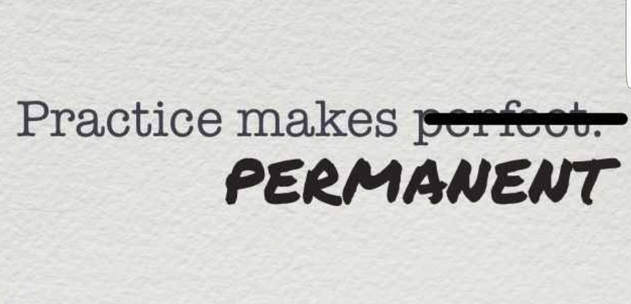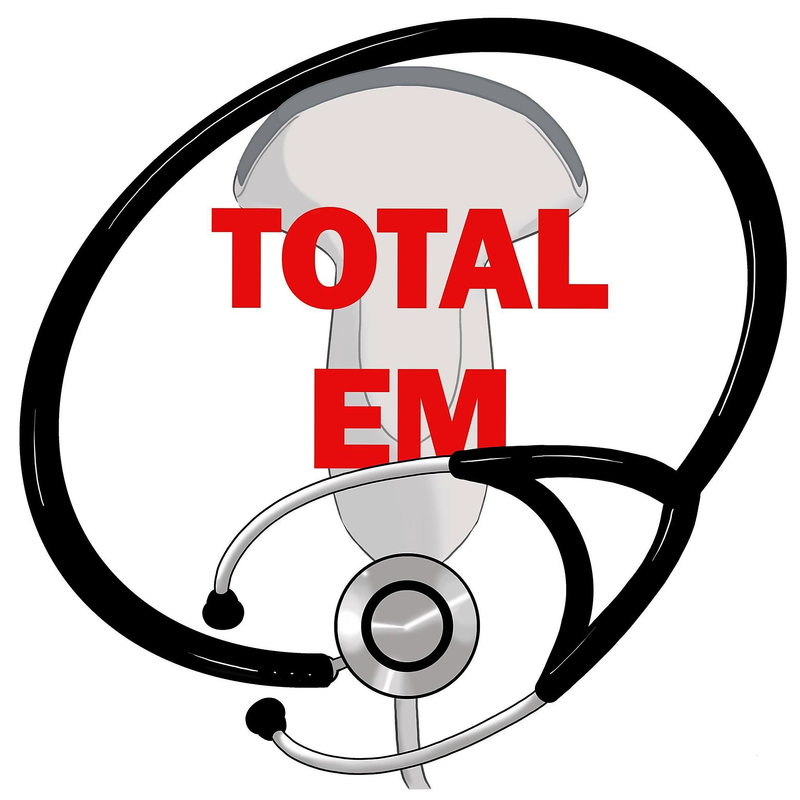|
Practice makes permanent and only perfect practice makes perfect. There have been recent conversations on "deliberate practice" which has hit FOAMed with Scott Weingart's interview of Anders Ericsson and subsequent posts. This post is not going to delve in that topic, but rather how we should be teaching and training when it comes to procedures.
A quick note, the text before is different from the podcast so make sure to check both!
The quote at the beginning was something taught early in life. Practice only embeds something further into memory. Only if we do some entirely correct will we get the age old "practice makes perfect" bit. Another phrase that is enlightening is, "Do not train until you get it right. Train until you cannot get it wrong." The real question is are doing this with our students? When teaching firefighters, we focus heavily on repetition. Someone is constantly standing over them, at least initially, while the learner is practicing donning their bunker gear. There is a clear and measurable goal present such as donning all gear in less than 60 seconds. In medicine, we do not always have such clearly defined goals especially with repetition to the point that we make sure they "cannot get it wrong" at least in the broad sense. Most of us have heard of the "see one, do one, teach one" but is that safe? Think about intubation or central lines. Is this really a skill you only see once or practice on a single day and then go out to do this on living patients? There are certainly those learners who are going down this route of practice. However, we are not truly setting them up for success. Instead, we are risking their failure. Let us use the example of intubation. Often a new learner may have had a couple of hours one day where they picked up a laryngoscope with their classmates while one or two instructors walk around the room trying to pick up where people make mistakes. Then on rotations a preceptor hands them the laryngoscope and tells them to intubate. While performing the procedure they are constantly coached (sometimes poorly) but the student has a hard time grasping the basics and not usually do not have a chance to learn the finer points of the procedure. Maybe the student was able to successfully intubate, but if you ask them after the intubation how they felt, they may not give a glowing endorsement of themselves. An alternative way to practice would be to take a learner through a class where they have one-to-one or near one-to-one training with an expert. The focus would be to learn the overall concept, focus on micro-skills (specific tasks which can be difficult during the overall procedure), and then perform the entire procedure from start to finish. Once they are able to perform these skills proficiently they can practice them independently. During regular intervals, they would meet with an expert (and possibly different ones with time) and focus on new parts or further develop those skills that are lacking. Once ready, the student can confidently on rotations try this on a live patient while still under close direction. Now they are able to see those skills in action and apply what they have learned where they can demonstrate mastery particularly of the basics. These learners will not master any skill the first time, but they will improve in a safer and faster rate. One issue with this approach is time. To master the basics and to become truly proficient at the micro-skills of a procedure is complex and can be time-consuming. We as the educators both in the didactic and clinical realms need to be willing and able to train our students in such skills. The old way of "do one, see one, teach one" is out. Instead, we should focus on first teaching the basics and the principles needed to do the procedure safely before letting it be applied to an actual living patient. Another challenge can be how to practice. Simulation is preferred but it does not have to be high fidelity. Sticking with the intubation example, first focus on the tools and maybe the basics with development of micro-skills. The first micro-skill could be checking the blade and the tube for patency and function. Then there can be a focus on appropriate ventilations. No matter the steps, it still applies that the learner can develop the skills in a stepwise approach. The manikin can be basic and does not need to be a full high fidelity body that can spontaneously breathe and talk. With time, those can be built in or one might even consider the introduction of cadavers. However, the main part is to focus on the skills and not the simulator. Some may ask about mental practice. Although this is beneficial, a new student can have a difficult time grasping how this works. Visualizing a skill works best after seeing and practicing on some sort of tactile level such as a manikin when it comes to intubation. Also, by practicing in a way that an expert can directly visualize the student working on the skill is important before developing mental practice. Once the student is competent, they can later practice this in their mind and even try to develop scenarios, but this will be more complex and should have coaching. There are certainly those procedures that it is hard to simulate and then practice on a live patient. For example, performing a surgical cricothyrotomy is rare. Finding equipment to simulate the experience can also be challenging unless you improvise or have excellent resources available. It will be difficult at best for a student to observe and then practice this skill on a live patient. Instead, we have to develop other methods such as increased focus of competence based on the simulations we are able to provide before the student can be exposed to an actual case in order to further increase their odds of success. To summarize, we need to change the way we practice and develop skills in medicine. In emergency medicine we perform rapid and complex skills that are potentially dangerous with limited time to prepare if we have not done so in advance. High risk, low frequency events are some of the most serious in any field including medicine. By training from a ground up approach using a concise approach, micro-skills, mastery of basics, and then practical application in a controlled environment with an expert to assist we can significantly improve our success while increasing safety.
This is a quick discussion and we will evaluate this more in upcoming posts. Let us know what you think by giving us feedback here in the comments section or contacting us on Twitter or Facebook. Remember to look us up on Libsyn and on iTunes. If you have any questions you can also comment below, email at [email protected], or send a message from the page. We hope to talk to everyone again soon. Until then, continue to provide total care everywhere.
1 Comment
|
Libsyn and iTunesWe are now on Libsyn and iTunes for your listening pleasure! Archives
August 2022
Categories |
||||||


 RSS Feed
RSS Feed